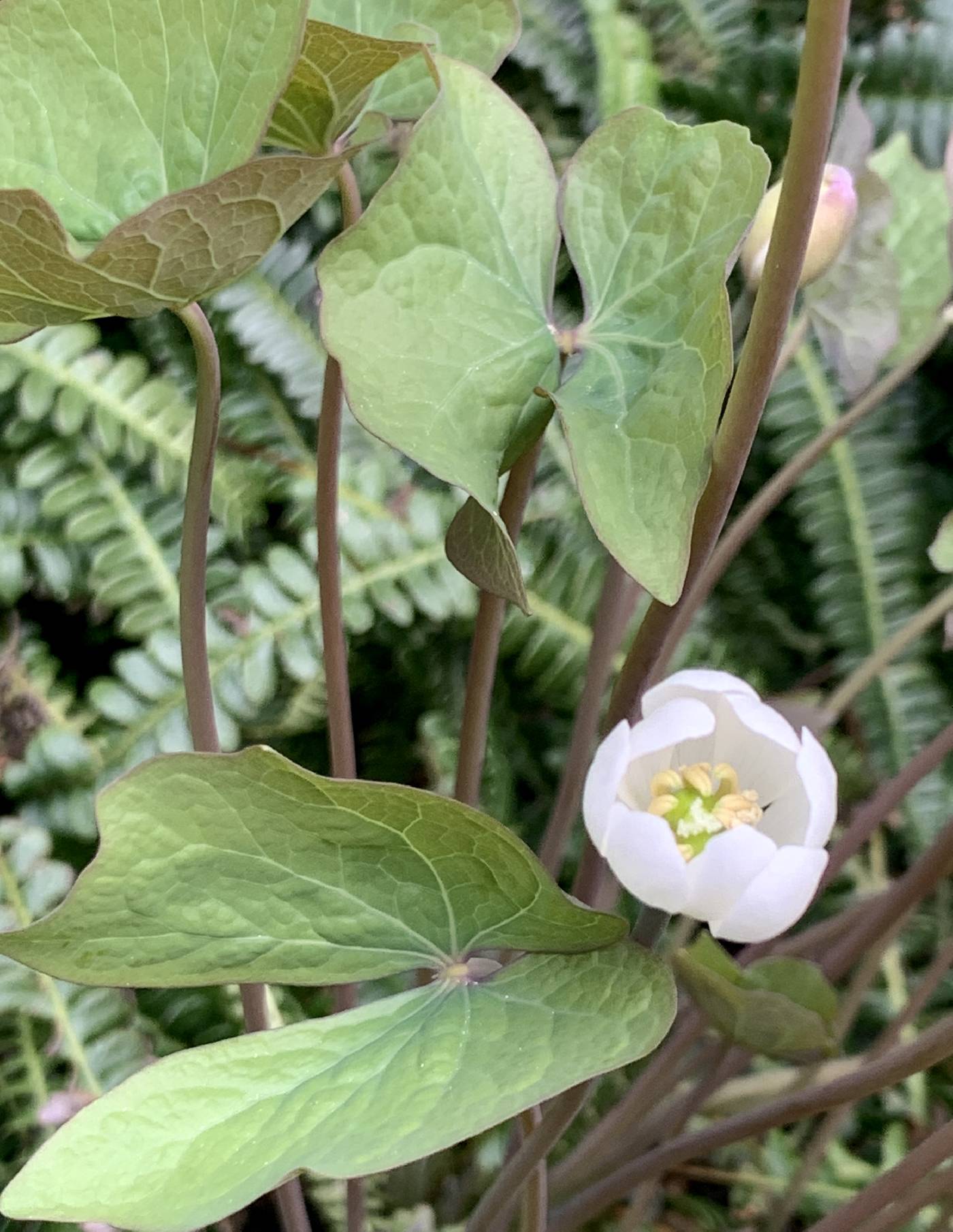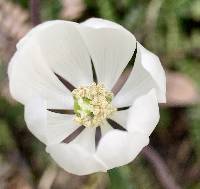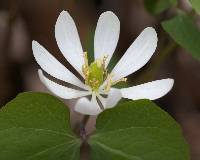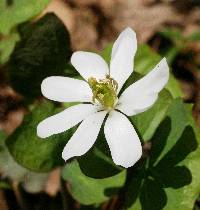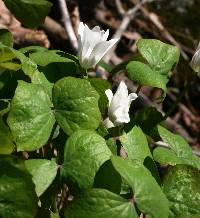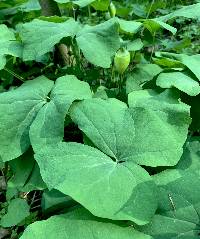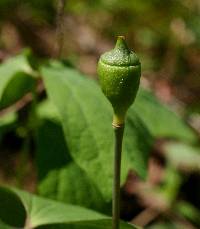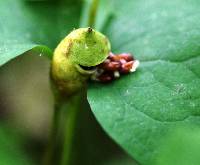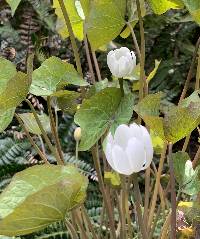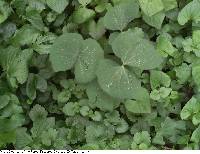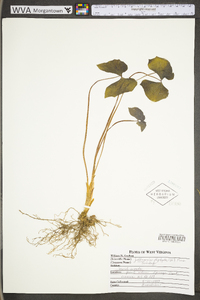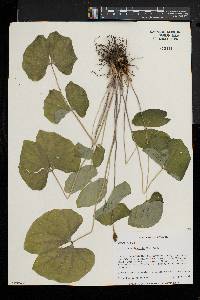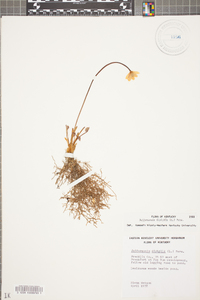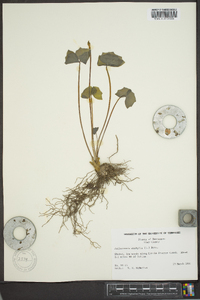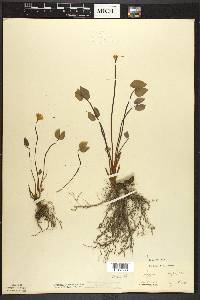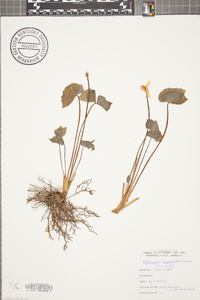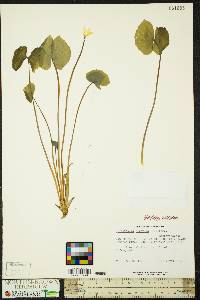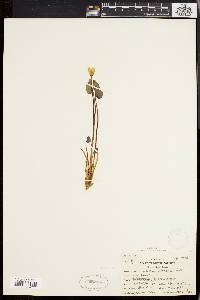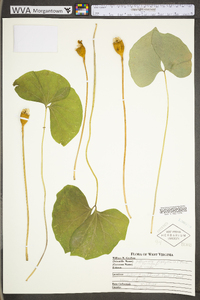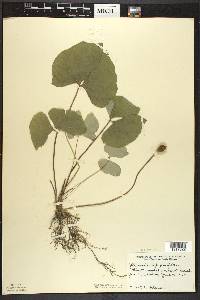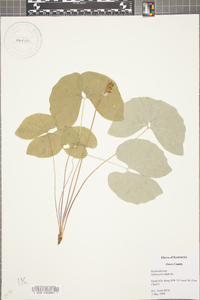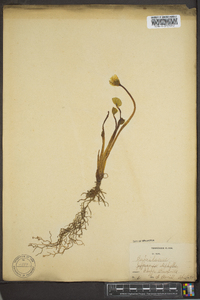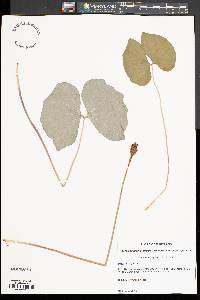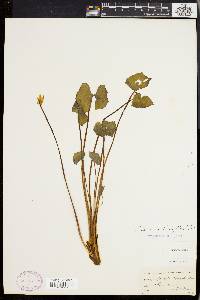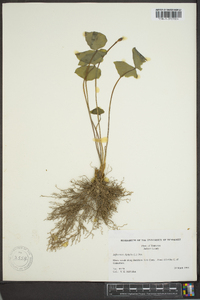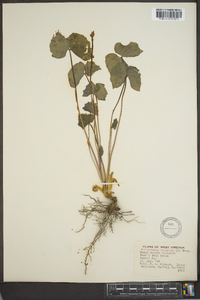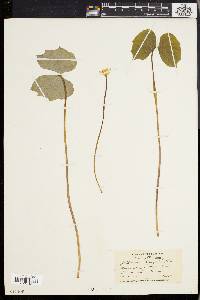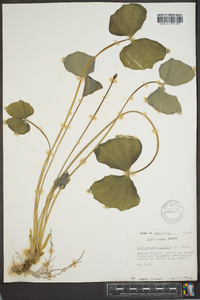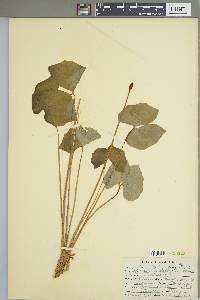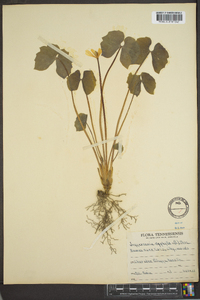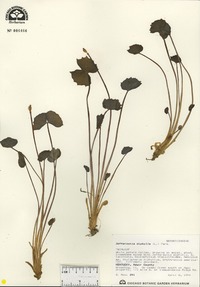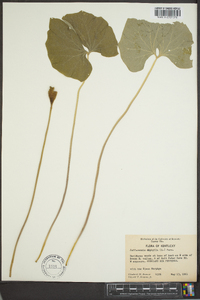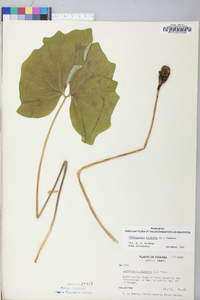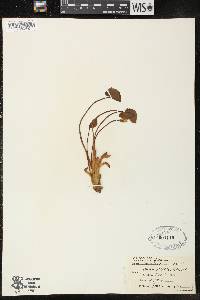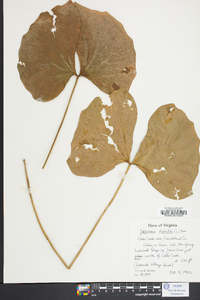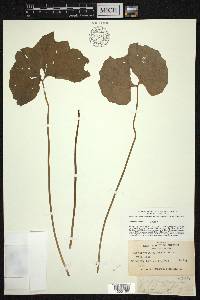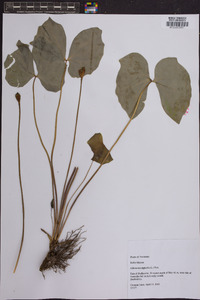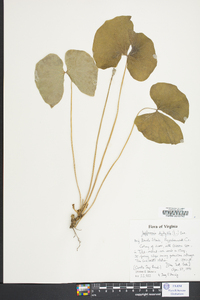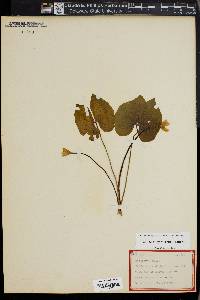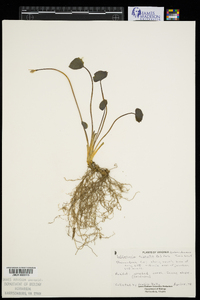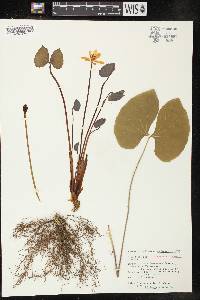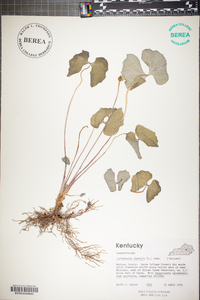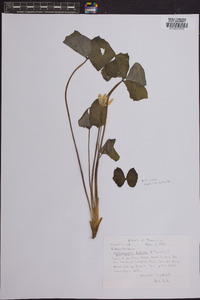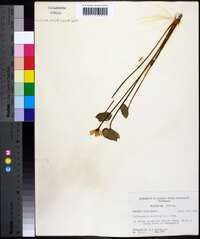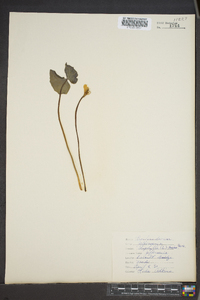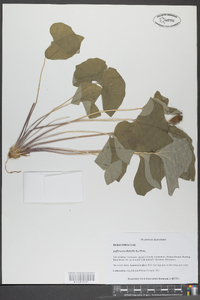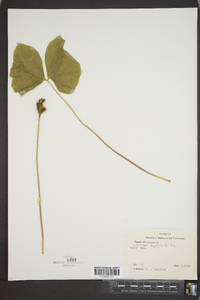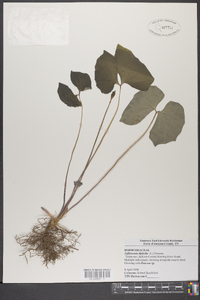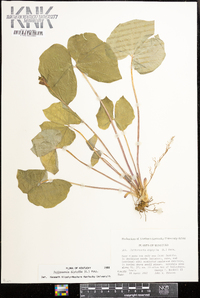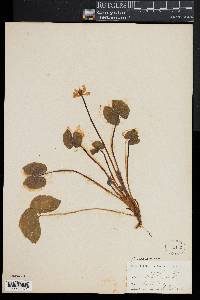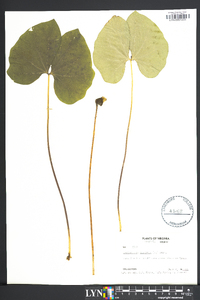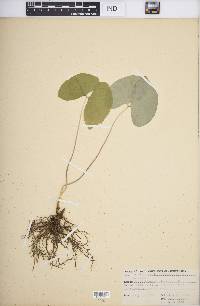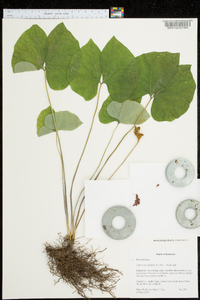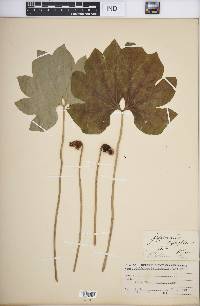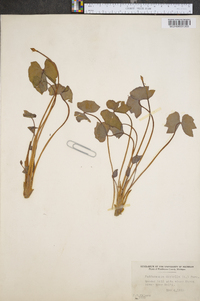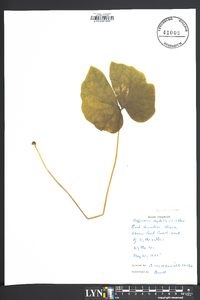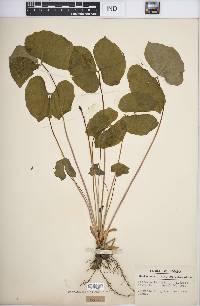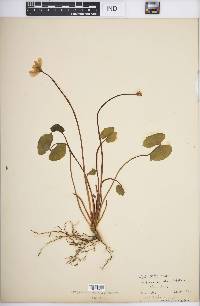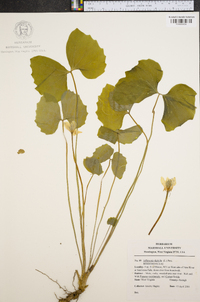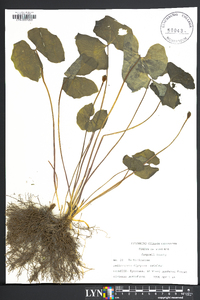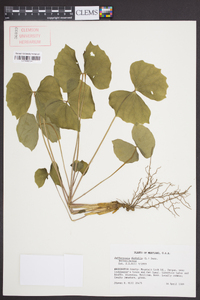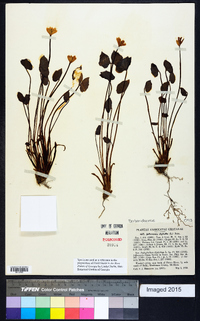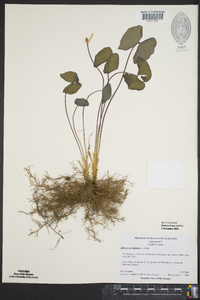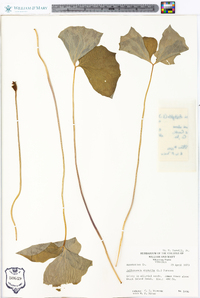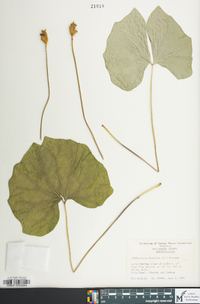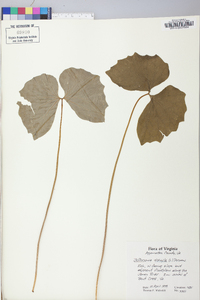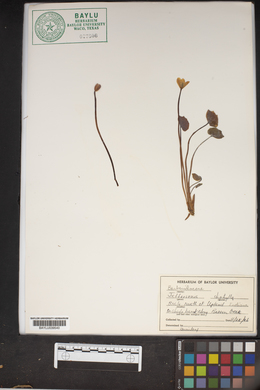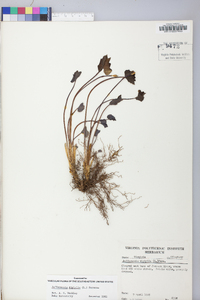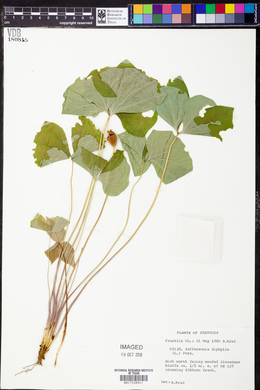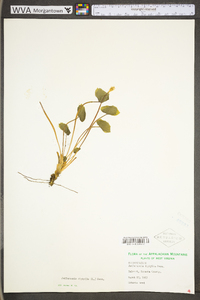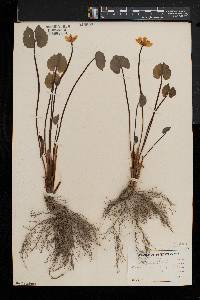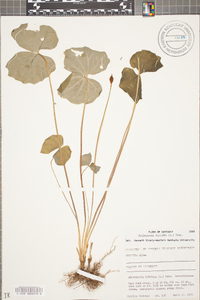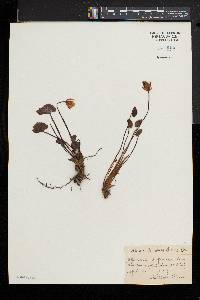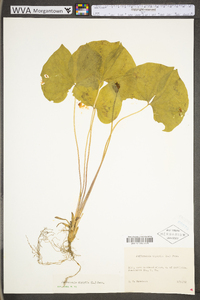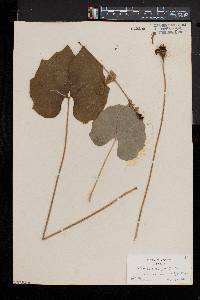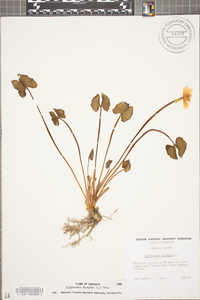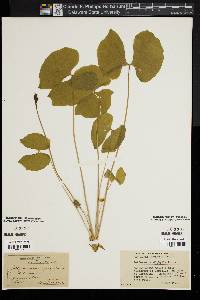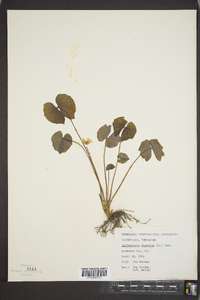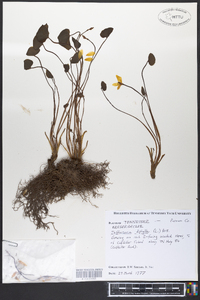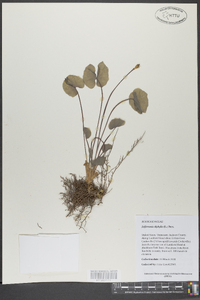
|
|
|
|
Family: Berberidaceae
Twinleaf
[Jeffersonia bartonis Michx., moreJeffersonia lobata Nutt.] |
Leaves: petiole slender, erect, 9-25 cm at anthesis, maturing to 18-43 cm. Leaf blade 2-foliolate, often with minute apiculation between leaflets; leaflets 1.2-4 × 0.6-2.5 cm at anthesis, maturing to 6-13 × 3-7 cm, lobes rounded to acute. Scapes 9-33 cm, frequently taller than petioles at anthesis. Flowers: sepals elliptic to obovate, 7-15 × 4-6 mm; petals white, elliptic to obovate, 11-22 × 9-12 mm; stamens 6-12 mm; filaments 2-3 mm; anthers 4-9 × 1-1.5 mm; ovaries 6-11 × 3-7 mm. Fruits 18-38 × 8-17 mm, leathery, opening transversely, apical quarter resembling lid, becoming reflexed. Seeds oblong, 4-7 × 2 mm; aril laciniate, attached at adaxial side of hilum. 2 n = 12. Flowering early spring; fruiting spring. Rich moist woods to semiopen rocky slopes and outcrops, usually over limestone or other calcareous rocks; 100-800 m; Ont.; Ala., Ga., Ill., Ind., Iowa, Ky., Md., Mich., Minn., N.Y., N.C., Ohio, Pa., Tenn., Va., W.Va., Wis. Plants of Jeffersonia diphylla were used medicinally by Native Americans for treatment of dropsy, gravel and urinary ailments, and for gall and diarrhea, and in poultices for sores and ulcers (D. E. Moermann 1986).
Perennial herb 10 - 20 cm tall Stem: erect. Leaves: alternate, basal, with short stalks eventually extending to 20 - 50 cm. The blade is 1.5 - 15 cm long, deeply divided into two kidney-shaped segments with rounded to pointed tips, and non-toothed to shallowly toothed or lobed. Flowers: borne solitary on a leafless stalk (scape) 10 - 33 cm long, white, 1 - 3 cm across, with four petal-like sepals that drop early, eight 1.1 - 2.2 cm long petals, and eight stamens. Flowering occurs before the leaves mature. Fruit: capsule-like, brownish, 1.8 - 3.8 cm long, 0.8 - 1.7 cm wide, inversely egg-shaped, leathery, opening along a horizontal line and resembling a lid, containing ten to 25 seeds. The seeds are red, 4 - 7 mm long, oblong, with a fringed white appendage (aril) at one end. Similar species: Podophyllum peltatum lacks compound leaves, has a single drooping flower located between two leaves, and a yellow berry. Caulophyllum thalictroides has compound leaves that are twice-divided into three branches, with each branch ending in three leaflets (triternate), flowers borne on an inflorescence, and naked blue seeds. Flowering: mid April to early May Habitat and ecology: Local in mesic woods, most often growing on north-facing slopes and in calcareous soils. Occurence in the Chicago region: native Etymology: Jeffersonia was named after President Thomas Jefferson (1743 - 1826). Diphylla means two-leaved. Author: The Morton Arboretum Scape 1-2 dm at anthesis; petioles at first shorter than the scapes, later elongating to 2-5 dm; blades immature at anthesis, eventually 8-15 cm; fls white, 1-3 cm wide; fr 2-3 cm; 2n=12. Rich woods, preferring calcareous soil; w. N.Y. and s. Ont. to se. Minn., s. to Md. and Ala. Apr., May. Gleason, Henry A. & Cronquist, Arthur J. 1991. Manual of vascular plants of northeastern United States and adjacent Canada. lxxv + 910 pp. ©The New York Botanical Garden. All rights reserved. Used by permission. From Flora of Indiana (1940) by Charles C. Deam Infrequent to frequent throughout the area shown on the map. Generally found in rich soil on wooded slopes and more common in the southern counties. Margins of leaflets vary from entire and undulating to 5-7-lobed. …… Indiana Coefficient of Conservatism: C = 7 Wetland Indicator Status: N/A |
|
|
|
This project was made possible in part by the Institute of Museum and Library Services [MG-70-19-0057-19].
Powered by Symbiota

